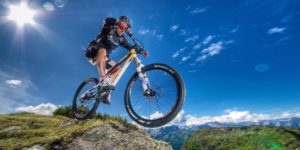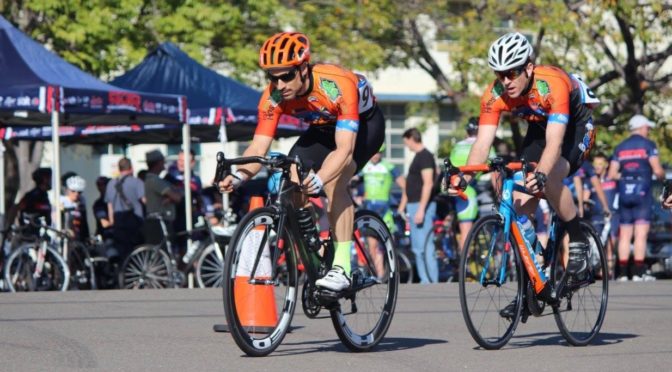Why all cyclists need to ‘hit the Gym’
I’m going to get straight to the point. Cyclists need to lift weights, period. I don’t want to, in this article, go into the performance-based data that supports this position. What I want to do is explore the growing body of scientific evidence that demonstrates that road cycling is bad for your bones. If road cycling is all you do, then I am sorry to say you are running a big risk to the long-term health of your skeletal system.
You see, there have been several studies that have measured the bone mineral density (BMD) of road cyclists and the findings are very concerning. Concerning enough indeed, that the researchers and scientists investigating this issue have recommended that coaches and health professionals involved with cyclists need to do more to promote the use of alternative exercise such as weight training, plyometrics, or other high impact activity as a complement to cycling training to help minimize bone loss in this population.
For example, Nichols and Rauh (2011) published a study in the J Strength Cond Res. titled “Longitudinal changes in bone mineral density in male master cyclists and nonathletes” and the findings should make all serious road cyclists re-assess their current training programs. The study followed changes in BMD over a 7-year period in 19 competitive male master cyclists and 18 nonathletes. All bone sites measured showed a consistent pattern of lower BMD in cyclists versus nonathletes but those that reported participation in weight training or impact type exercise lost significantly less BMD at the spine and femoral neck (hip) than those not undertaking such additional activities.
Worryingly, a significantly greater proportion of cyclists than nonathletes could be described as suffering osteopenia or osteoporosis during the study period with a much greater likelihood of osteoporosis being developed over the course of the study in cyclists. Competitive cycling and the training involved is not without risk, with falls a fairly common occurrence.
There is therefore an inherent increased risk for bone fracture caused from such falls, but if BMD status is poor to start with the risk of fracture or more serious complications is further compounded and increased. As such, there should be much greater attention given to promoting the benefits of weight training or other high impact activities in an effort to counter such skeletal changes in road cyclists.

In my next article (see Cycling and skeletal health – part 2) I will explore whether there are any differences between professional road cyclists and the rest of us in relation to skeletal health plus whether any differences exist between road, track and mountain bikers.
Until then, enjoy your cycling, stay safe and go and do some lifting.
References
- http://www.ncbi.nlm.nih.gov/m/pubmed/20581701/
- http://www.biomedcentral.com/1741-7015/10/168
- http://www.ncbi.nlm.nih.gov/pmc/articles/PMC3230645/
- Wilks DC, et al. Forearm and tibial bone measures of distance- and sprint-trained master cyclists. Medicine and Science in Sports and Exercise, Mar 2009; 41 (3): 566-573.
- Campion F, et al. Bone status in professional cyclists. International Journal of Sports Medicine, Jul 2010; 31 (7): 511-515.
For local Townsville residents interested in FitGreyStrong’s Exercise Physiology services or exercise programs designed to improve muscular strength, physical function (how you move around during the day) and quality of life or programs to enhance cycling or athletic performance, contact FitGreyStrong@outlook.com or phone 0499 846 955 for a confidential discussion.
For other Australian residents or oversees readers interested in our services, please see here.
Disclaimer: All contents of the FitGreyStrong or FGS website/blog are provided for information and education purposes only. Those interested in making changes to their exercise, lifestyle, dietary, supplement or medication regimens should consult a relevantly qualified and competent health care professional. Those who decide to apply or implement any of the information, advice, and/or recommendations on this website do so knowingly and at their own risk. The owner and any contributors to this site accept no responsibility or liability whatsoever for any harm caused, real or imagined, from the use or distribution of information found at FitGreyStrong. Please leave this site immediately if you, the reader, find any of these conditions not acceptable.
© FitGreyStrong
